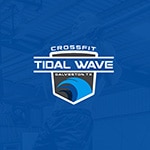 Every Saturday at 9am we have a “Soul Crusher” workout. This is a testing day as in it test your mental toughness. The skills themselves are completely accessible. The volume and arrangement is what makes them challenging. It is not unheard of for this workout to take upwards of 40+ minutes. Training days versus Test days The early CrossFit days looked a bit different than today. Back then the goal was, ‘How much can we mess you up today?’ Not anymore. Yes, sometimes you will feel like you overdosed when you push yourself to the limit, but that feeling shouldn’t be the norm; it should be a once-in-a-blue moon occurrence—often when you accidentally misjudged a workout. Think about this question for a minute: When you come to workout, are you conscious of whether it’s a training day or a testing day? You should be!
Every Saturday at 9am we have a “Soul Crusher” workout. This is a testing day as in it test your mental toughness. The skills themselves are completely accessible. The volume and arrangement is what makes them challenging. It is not unheard of for this workout to take upwards of 40+ minutes. Training days versus Test days The early CrossFit days looked a bit different than today. Back then the goal was, ‘How much can we mess you up today?’ Not anymore. Yes, sometimes you will feel like you overdosed when you push yourself to the limit, but that feeling shouldn’t be the norm; it should be a once-in-a-blue moon occurrence—often when you accidentally misjudged a workout. Think about this question for a minute: When you come to workout, are you conscious of whether it’s a training day or a testing day? You should be!  TRAINING Training should make up close to 80 percent of your time at the gym. Training includes your long warm-up, your mobility work, your strength and skill work. Usually you’re working below your physical capacity here, and it’s where the gains are made! Warm-up is there the gains are made? Hells yeah! The often-boring, tedious tinkering to improve your ankle or shoulder flexibility, or the repetitive linear progression program that has you asking, “Back squats again?” are absolutely where the biggest gains are made. What about the conditioning—the reason 50% of you show up? It’s important but not where the long lasting changes are made. Think of conditioning as a chance to put your newfound strength and skill work to use. What do you mean? Isn’t conditioning the place I should ruin myself and end up in a heap of sweat and tears?
TRAINING Training should make up close to 80 percent of your time at the gym. Training includes your long warm-up, your mobility work, your strength and skill work. Usually you’re working below your physical capacity here, and it’s where the gains are made! Warm-up is there the gains are made? Hells yeah! The often-boring, tedious tinkering to improve your ankle or shoulder flexibility, or the repetitive linear progression program that has you asking, “Back squats again?” are absolutely where the biggest gains are made. What about the conditioning—the reason 50% of you show up? It’s important but not where the long lasting changes are made. Think of conditioning as a chance to put your newfound strength and skill work to use. What do you mean? Isn’t conditioning the place I should ruin myself and end up in a heap of sweat and tears?  Not if you’re doing it right. If you’re conditioning in a way that’s helping you improve your overall fitness, then it should feel controlled and well-paced, just like your strength and skill work. If you feel like you might pass out, chances are you went out too hard, and will likely end up slower in the end. One of the most well-respected coaches around, James FitzGerald, the owner of Opex Fitness in Arizona, explained that every workout should have an intended stimulus. This means, when you hear “3, 2, 1 Go,” it shouldn’t be a giant free-for-all chaotic experience, where people devastate their bodies and can’t recover for three hours. In fact, most of the time you shouldn’t even be going at a 100 percent effort. What? I shouldn’t try my hardest? Think about this quote for a minute: “CrossFit has been marketed as a sport where everyone’s so intense all the time, but the best CrossFit athletes in the world are never going that hard,” – James FitzGerald. The point is simply staying below your threshold on any given multi-modal workout will usually make you faster in the end. The concept is simple to understand when we’re talking about a single modality, such as running, rowing or swimming. Nobody is going to sprint the first 30 seconds of a 5k run. But time and time again during multi-modal workouts we’ve never done before, people do the equivalent of the latter, making you slower in the end. For those of you who like the pain: Don’t worry, you will still feel pain during conditioning workouts, but try to save it for the final quarter of the conditioning workout—the big sprint finish! If you’re in pain in the first half of the workout, you’re in trouble. Going back to FitzGerald’s point: His overarching argument is that sticking with an 80 percent effort in both training and competition will likely lead to the best overall performances. This doesn’t mean you’re not working at improving your fitness; after all, if your 80 percent effort keeps getting better and better, then so does your 100 percent effort. TEST DAYS Testing should make up about 10 to 15 percent of your time in the gym. It’s essentially the sport aspect of what we do—the game day. Everyday can’t be a test day, but remembering to test yourself here and there can go a long way in keeping you motivated as an athlete, as well as giving you moments of both fear and satisfaction. Test day is the time it’s acceptable to flirt with the line of going out too hard and overdosing yourself a bit, as doing this is a great way to learn about where you’re fitness level is at. THAT BEING SAID, even when you put yourself out there—either in the gym or at a competition—as FitzGerald pointed out, this still doesn’t mean you’re overdosing yourself to a place that takes its toll on your performance recovery. It’s still best off knowing your fitness level, having a plan of attack, and avoiding going out too hard and fading by the third round of a five round workout. Test days are important, but smart testing, as opposed to blindly jumping in without a plan, is always best.]]>
Not if you’re doing it right. If you’re conditioning in a way that’s helping you improve your overall fitness, then it should feel controlled and well-paced, just like your strength and skill work. If you feel like you might pass out, chances are you went out too hard, and will likely end up slower in the end. One of the most well-respected coaches around, James FitzGerald, the owner of Opex Fitness in Arizona, explained that every workout should have an intended stimulus. This means, when you hear “3, 2, 1 Go,” it shouldn’t be a giant free-for-all chaotic experience, where people devastate their bodies and can’t recover for three hours. In fact, most of the time you shouldn’t even be going at a 100 percent effort. What? I shouldn’t try my hardest? Think about this quote for a minute: “CrossFit has been marketed as a sport where everyone’s so intense all the time, but the best CrossFit athletes in the world are never going that hard,” – James FitzGerald. The point is simply staying below your threshold on any given multi-modal workout will usually make you faster in the end. The concept is simple to understand when we’re talking about a single modality, such as running, rowing or swimming. Nobody is going to sprint the first 30 seconds of a 5k run. But time and time again during multi-modal workouts we’ve never done before, people do the equivalent of the latter, making you slower in the end. For those of you who like the pain: Don’t worry, you will still feel pain during conditioning workouts, but try to save it for the final quarter of the conditioning workout—the big sprint finish! If you’re in pain in the first half of the workout, you’re in trouble. Going back to FitzGerald’s point: His overarching argument is that sticking with an 80 percent effort in both training and competition will likely lead to the best overall performances. This doesn’t mean you’re not working at improving your fitness; after all, if your 80 percent effort keeps getting better and better, then so does your 100 percent effort. TEST DAYS Testing should make up about 10 to 15 percent of your time in the gym. It’s essentially the sport aspect of what we do—the game day. Everyday can’t be a test day, but remembering to test yourself here and there can go a long way in keeping you motivated as an athlete, as well as giving you moments of both fear and satisfaction. Test day is the time it’s acceptable to flirt with the line of going out too hard and overdosing yourself a bit, as doing this is a great way to learn about where you’re fitness level is at. THAT BEING SAID, even when you put yourself out there—either in the gym or at a competition—as FitzGerald pointed out, this still doesn’t mean you’re overdosing yourself to a place that takes its toll on your performance recovery. It’s still best off knowing your fitness level, having a plan of attack, and avoiding going out too hard and fading by the third round of a five round workout. Test days are important, but smart testing, as opposed to blindly jumping in without a plan, is always best.]]>
What is "Soul Crusher" Saturday?
Share This
Related Posts
10 Signs You Need A Health And Fitness Reboot
First things first: what the heck is a health and fitness reboot?
Tired Of Boring Workouts? Spice Things Up With These 10 Tips
Let’s face it: working out can feel like a chore sometimes. Even if you’re the biggest fitness buff around, training is not always as exciting as you’d like it to be.






